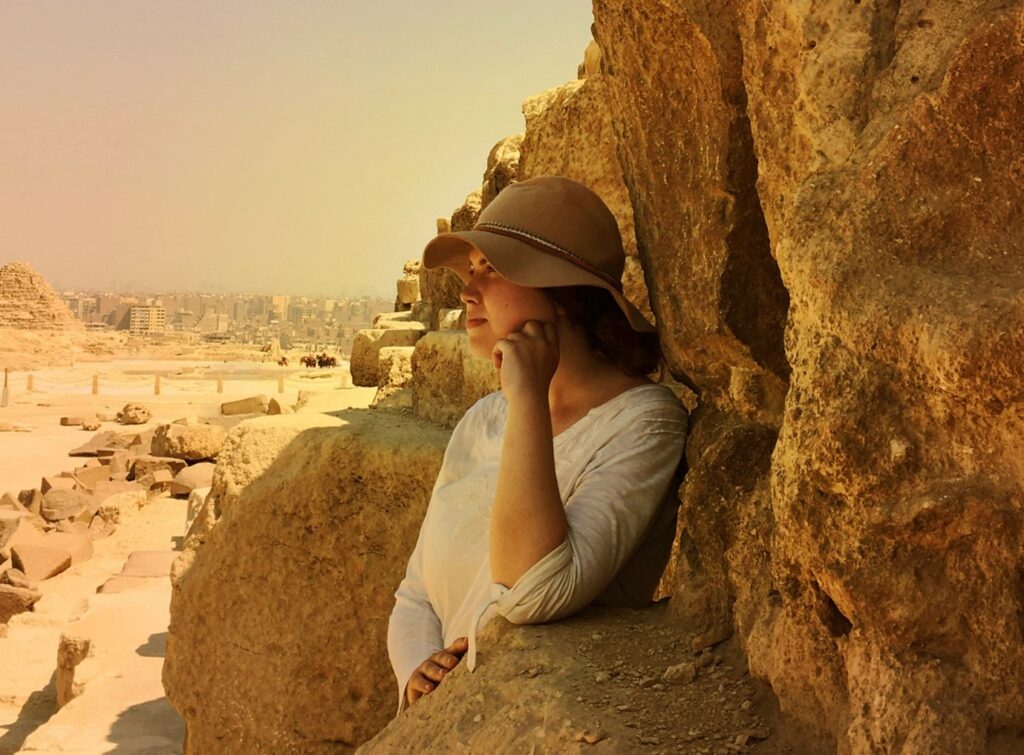
| Academic Year | 2022-2023 |
| l.tilley.22@abdn.ac.uk | |
| Institution | University of Aberdeen |
Biography
School: School Of Geosciences
Project: An Integrated Multi-Proxy Approach to the Late Pleistocene Landscapes and Environments of Ireland and Scotland, and the Potentials for Human and Faunal Recolonizations at the End of the Last Ice Age
Supervisors: Dr Kate Britton, Dr Maarten Blaauw &Prof Matteo Spagnolo
Undergraduate Education: BA (Joint Hons) Ancient History And Archaeology, University Of Durham
Postgraduate Education: MRes (Archaeobotany, Palynology, Isotopic Analysis), University Of Durham
Research: During my time at the University of Durham, as an undergraduate and a postgraduate research student, I undertook the development of a number of data collections. Two of these projects resulted in dissertations focused on Iron Age community environmental interactions, specifically systems of management. My focus in terms of data collection and analysis is plant-orientated, my specialisms residing in plant-macrofossil (archaeobotany) analysis and palynology. All my research centres on archaeological community-environment interactions and how these influence plant communities. As such my PhD at Aberdeen is a natural continuation of my previous research on the ‘footprint’ of human communities on environments and patterns/influences on movement through natural landscapes. In terms of applied techniques, the project will allow a multi-proxy approach ensuring further development of my studies into archaeobotany, palynology and isotopic analysis, whilst also providing an opportunity to develop further skills in varied proxy analysis. Whilst there has been a noted growth in multi-proxy environmental studies more generally, such studies are still relatively uncommon within archaeology, and studies on the Late Pleistocene are particularly dislocated from this body of work. Through collation of extant proxy datasets outside archaeology and through sampling of new environmental materials, and subsequent analysis of various extracted proxy data, this PhD will explore recolonisation events and potentially seasonal movement in Late Pleistocene human and faunal communities in Scotland and Ireland. Allowing further knowledge of how these communities were affected by environmental context and revealing details potentially of early human niche construction.
In order to make a tangible contribution to extant environmental datasets it is the intention that a number of cores be taken in relative proximity to known sites of Late Pleistocene activity in Scotland. The first task will be collation and curation of data attesting to the nature of development and change in Late Pleistocene landscapes and environments. It will also be necessary to profile the nature of human and faunal movement and recolonisation within landscapes, the conditions which are conducive to these processes and potential markers for these events archaeologically and environmentally. It is the intention that Late Pleistocene archaeological sites be engaged with wherever possible in regard to fieldwork, in order to expand understanding of spatial interactions with environmental contexts. The impact of this research will be profound in terms of understanding the development of early human-environment interactions and further to this the placement of recolonisations (human and faunal) temporally and situationally. Through an understanding of early impact on and relation to environments, strategies for long-term management and a deeper connection to modern landscapes can develop. This project will extend further from a purely academic output to creative outlets and hopefully a long-term visual interactive format, potentially in the form of an online model mapping potential human and faunal movement (Multiple Scenario Approach). Considering creative outputs, artistic/visual presentations of the data may be considered, in for example an illustrated narrative guide. Science communication is a passion of mine, so the development of my PhD will be documented by a blog and accompanying podcast and an information packet for stakeholders will be developed, to increase accessibility to my research. An integral aspect of the integrity of my research is accountability to FAIR Principles and dedication to the practice of open science.
Relevant Articles
- On Scottish Pleistocene Landscape History: Merritt, J. W., A. M. Hall, J. E. Gordon & E. R. Connell. 2018. Late Pleistocene Sediments, Landforms and Events in Scotland: a Review of the Terrestrial Stratigraphic Record. NERC Report 522808, BGS.
- On Vegetation Communities: 2012. Vegetational and Associated Environmental Changes During Late Devensian and Early Holocene Times. In, Palaeolithic and Mesolithic Panel Report, A. Saville & C. Wickham-Jones. Scottish Archaeological Research Framwork, Society of Antiquaries of Scotland.
- Note On Early Hunter-Gatherer Communities: Wicks, K & S. J. Mithen. 2014. The Impact of the Abrupt 8.2 ka Cold Event on the Mesolithic Population of Western Scotland: a Bayesian Chronological Analysis Using Activity Events. Journal of Archaeological Science, 45. 240-269.
- Significant Assemblage, Hunter-Gatherer Migrations: Ballin, T. B., A. Saville & R. Tipping et al. 2010. An Upper Palaeolithic Flint and Chert Assemblage From Howburn Farm, South Lanarkshire, Scotland: First Results. Oxford Journal of Archaeology, 29. 323-360.
Links: FAIR Principles – GO FAIR (go-fair.org)
Twitter: Leia Tilley (@IronArchBotany) / Twitter
Project Blog: Home | Pre-History Project (leiaktilley.wixsite.com)
Personal Website: Plants&Pollen | Leia Tilley (leiaktilley.wixsite.com)





















































